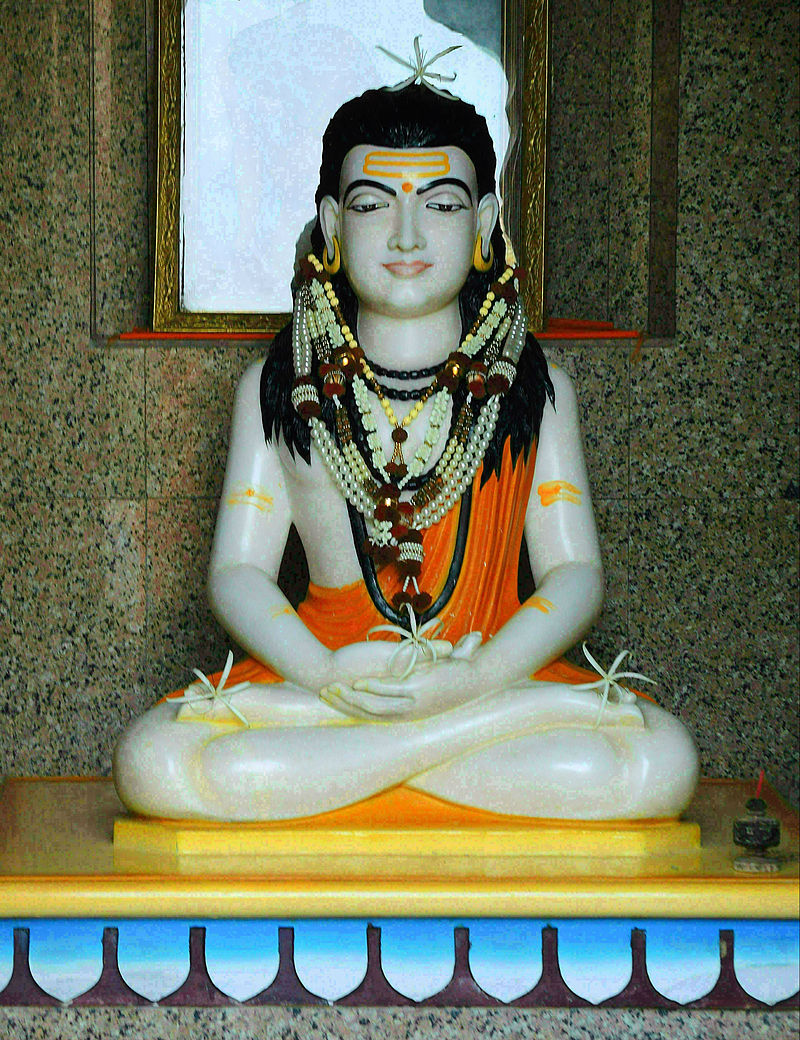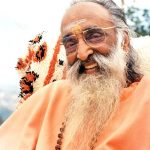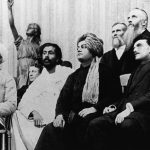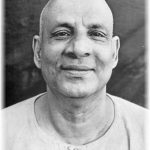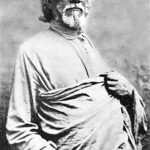Siddha Swami Gorakhnath or Yogi Gorakhnath is a Yogi and saint. He is also one of the two main disciples of Siddha Matsyendarnath. He is one of the Navnaths. Gorakhnath founded the Nath monastic movement. He is beyond the human plane and appears to his disciples across ages.
Siddha Gorakhnath is also Goraksanath. His followers are the Yogis, Gorakhnathi, Darshani or Kanphata. They are found around Garbhyagiri in Ahmednagar in Maharashtra. Siddha Gorakhnath is Maha Yogi and is very popular in Maharashtra. He did not teach a specific theory. Instead, he taught that the search for the spiritual truth is the goal of man. He also taught that spiritual discipline, Yoga and ethics are the way to reach spiritual truth and Samadhi.

Image Source
History
Most historians place Siddha Gorakhnath in the first half of the 2nd millennium CE. Janeswari manuscripts help to place him in the 13th century while historical evidence in Gujarat places him in the 14th century.
The poems of Kabir, as well as that of Guru Nanak, mention Siddha Swami Gorakhnath as a powerful leader with a large following. Historians believe that this implies that he lived in their times. The ancient texts also describe him as a Buddhist although he lived in a place where the worship of Lord Shiva was more prominent. He then converted to Hinduism and supported Yoga and Shaivism. Gorakhnath followed and preached the ideals of Adi Shankara and Kumarila. He supported the Advaita interpretation of the Upanishads.
At that time there was a debate as to the dualism and non-dualism of spirituality. Siddha Gorakhnath found that the debate was impractical. He believed that it was the Yogi’s choice to take either one of the paths and that both of the paths led to the Samadhi state.
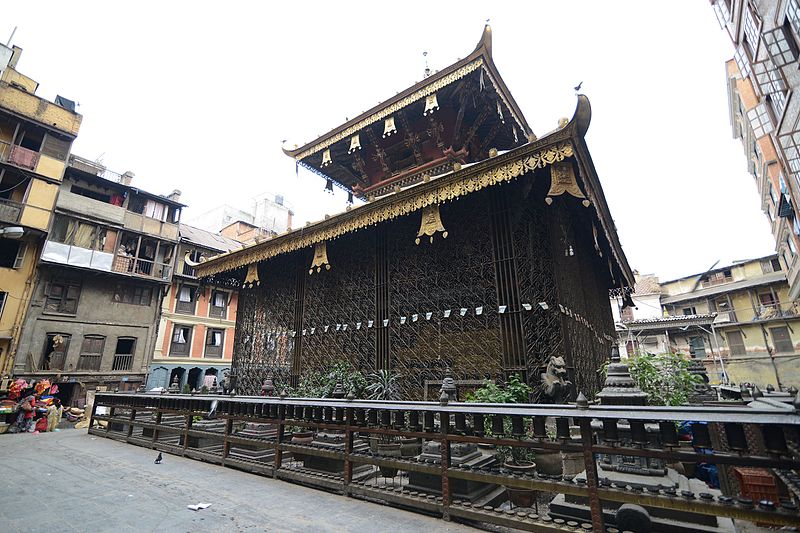
Image Source
Birth and Legends
There are many accounts of the birth of Siddha Swami Gorakhnath. The legends describe his appearance on Earth many times. He is superhuman and therefore there are no specifics on a particular date or place of birth. Some legends state that he was born in Northwest India perhaps in Peshawar or Punjab. Others name Bihar, Bengal and even Bangladesh. The lineage of most accounts consistently names Adinath (Lord Shiva) and Siddha Matsyendarnath as his Gurus. Only one of the legends place five Gurus between Siddha Matsyendranath and Siddha Gorakhnath.
Nath Traditions
The Nath traditions existed before Siddha Guru Gorakhnath. However, he spread it far and wide. The traditions describe his travels across Nepal, Sindh, Punjab, Uttar Pradesh, Uttarakhand, Assam, Tripura, Gujarat, Maharashtra, Bengal, Odisha, Karnataka and as far south as Sri Lanka. He also authored many works on Laya Yoga and is the greatest of the Naths.
Many cave temples exist in places where he meditated. A popular Samadhi shrine of Siddha Gorakhnath is in Nath Mandir in Ganeshpuri, Maharashtra. There are many Gorkhnath temples in India. Two of the most popular are in Garbhagiri, Ahmednagar and in Orissa. Legends also state that Siddha Matsyendranath and Siddha Gorkhnath did penance in the Kadri Temple, Mangalore, Karnataka. They also installed the Shivling at Kadri as well as Dharmasthala.
The orders of Gorkhnath were also operating free kitchens or Langars at the time when Guru Nanak founded Sikhism. This practice continues in Gorakhnath shrines.
Gorakhpur And Gorakhnath Math
The city of Gorakhpur and the Gorakhnath Math of the Nath Sampradaya is also named after him. This monastery is the cultural centre of the city and also publishes literature on the teachings and philosophies of Siddha Gorkhnath. There are conflicting beliefs about the links between Siddha Gorakhnath and Hatha Yoga.
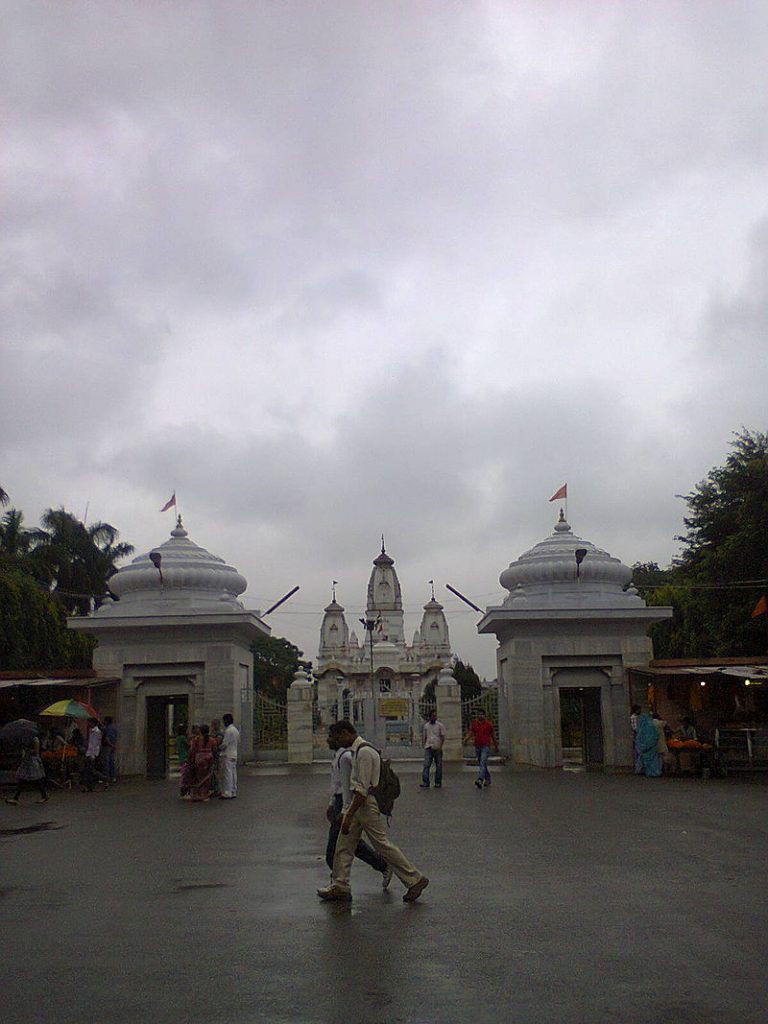
Image Source
Gorkhas
Gorakhnath is the Rashtra Devata or the lord of the state of Nepal. The currency of Nepal features him and the Gorkha district is named after him. A cave in Nepal has his Paduka and idol. There is an annual celebration held here for the last 700 years. It is called the Rot Mahotsav. The Indian Gorkhas and Nepali Gurkhas are also named after the saint. A Nepalese legend states that Gorkhnath was a disciple of Siddha Matsyendra or Machindra. He meditated at a hill in Deo Patan for 12 years in a motionless state. A temple marks the spot.

Image Source
Korakkar: Tamil Siddhars
The Tamil Tradition of Siddhars names Korakkar as one of the 18 Siddhars. Korakkar is a reference to Siddha Swami Gorakhnath. Legend states that he spent some of his childhood in the Velliangiri hills near Coimbatore. There is a Jeeva Samadhi temple of Siddha Gorkhnath in Vadakku Poigainallur, Nagapattinam, Tamil Nadu. Temples dedicated to him exist in Perur, Thiruchendur as well as Triconamalli. Korakkar caves exist in the Chathuragiri Hills as well as Kolli Hills.
Works on philosophy, medicine and alchemy are attributed to Siddhar Korakkar. His works include Korakkar Malai Vagatam, Malai Vaakadam, Korakkar Vaippu, Kaalamegam, Marali Varadham, Nilai Odukkam as well as Chandira Regai Nool. The Chandira Regai Nool is a text of predictions. He predicted that Bogar would be reborn at a time when the people lose their faith in God.
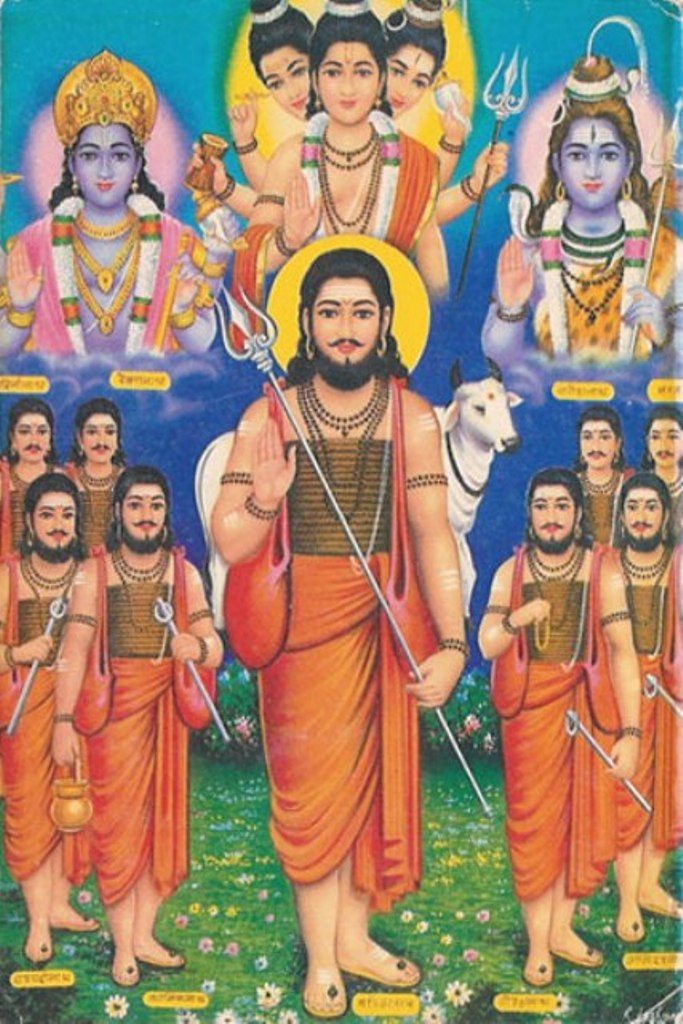
Image Source
Bengal And The Nath Tradition
Yogi Brahmans or Rudraja Brahmins in the states of West Bengal, Assam, Tripura and also some areas in Bangladesh take their surnames from Siddha Gorkhnath. Some names are Debnath, Debsharma, Nath as well as Bhowmick.
Literature
The texts Goraksha Samhita, Siddha Siddhanta Paddhati, Goraksha Gita, Yoga Martanada, Yoga Siddhanta Paddhati, Yoga-Bija as well as the Yoga Chintamani are attributed to Gorkhnath. The Siddha Siddhanta Paddhati is a Sanskrit work on Hatha Yoga that also describes the liberated Yogi or Avadhuta. This text describes the castes or Varnas as embedded in the nature of each person. A Brahman has nature or righteous conduct, a Kshatriya of valour, Vaisya of trade and the Shudra of service. A Yogi, however, has all the four Varnas or castes in himself. He identifies with the Atma or the individual soul as well as the universal Brahman.




